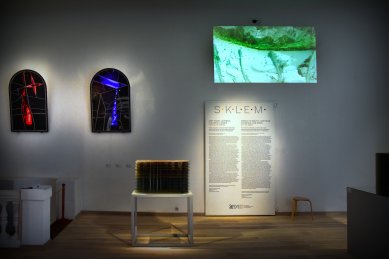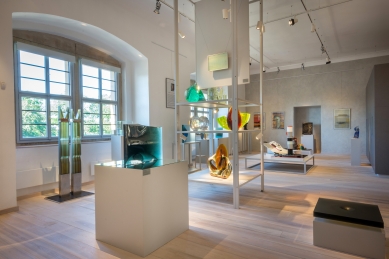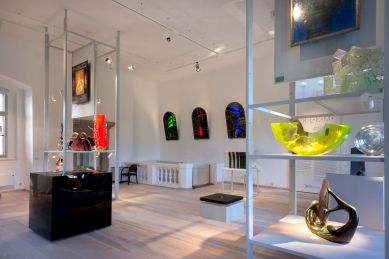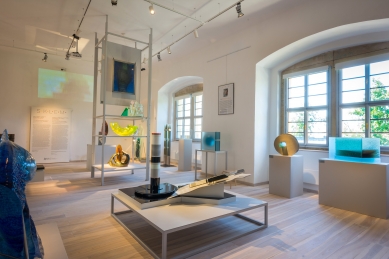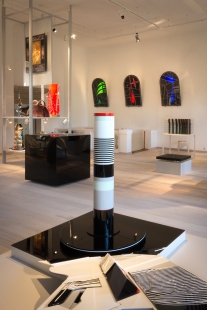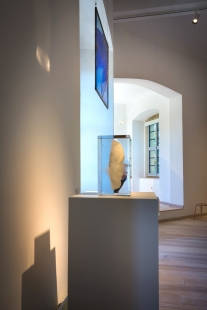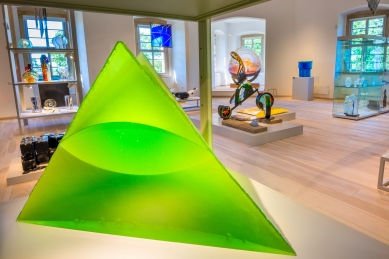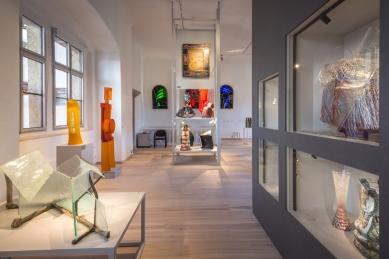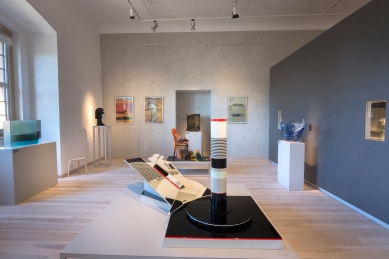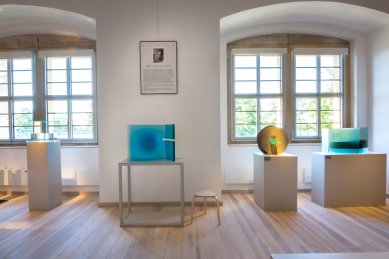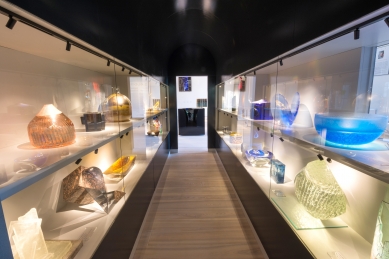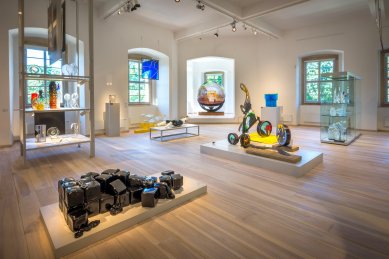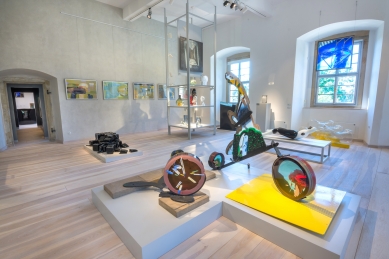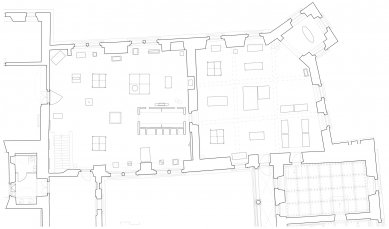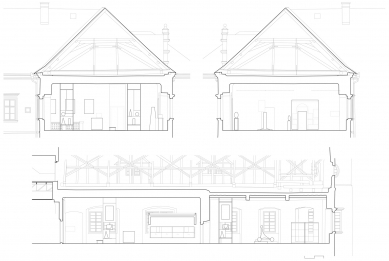
S.K.L.E.M. - new exposition of modern glass
World of Beauty, Lightness, Elegance, and Magic by Ivo Křen

The design of the new glass exhibition in the premises of Pardubice castle comes from and combines the specific collection of objects of the East Bohemia Museum, the spaces into which the exhibition is designed and the concept of the City of Glass. A City such where visitors find themselves surrounded by glass objects; where appear shadows, reflections, glares, or rays upon backgrounds from pure white to light grey— yet also neon, mirroring pools, illuminated skies; where visitors feel as if passing through glass, they recognise and understand the object of glass, letting themselves be consumed, taken in.
The layout of the exhibition is not open-ended and is arranged chronologically. Visitors enter and leave through either the main or adjacent entrance. Upon entering the exhibition space they find themselves on the edge of a glass city. The visitor is immediately confronted with the last three decades of the author’s work, figuratively at the periphery, as in the city, where contemporary architecture is primarily represented. This impression of the suburbs is enhanced by an irregular arrangement of the exhibits; the inserted object of the city passage; different illumination. These, together with the exhibits placed at the heights of the columnar objects, underline the concept of S.K.L.E.M. – to be surrounded by glass, as if within it, immersed in contemporary artistic glassmaking, as one is part of an urban structure, its neighbourhoods, streets and buildings and everyday life in it. The partition wall was left empty, ready for the installation of temporary exhibits of paintings.
The inserted object of the passage, where smaller and more sensitive objects are displayed with their own protection and lighting, takes visitors to the second room – the centre of the glass city. Here, the exhibits are placed in an easy-to-read raster which is reflected in the rectangular configuration of the supporting ceiling structure. The columnar objects and the composition of the several displays are also strictly arranged. As in the first room, natural daylight is used to illuminate the exhibits and is supplemented by artificial lighting for the possibility to quickly simulate daylighting effects on selected works. At the central square, as this part of the exhibition is understood, is the “church” which is symbolized by the object of the Bethlehem placed in the space of the risalto. Metaphorically we also perceive the entrance to the older collection as an entrance into the city museum. This part of the exhibition will be opened later.
The layout of the exhibition is not open-ended and is arranged chronologically. Visitors enter and leave through either the main or adjacent entrance. Upon entering the exhibition space they find themselves on the edge of a glass city. The visitor is immediately confronted with the last three decades of the author’s work, figuratively at the periphery, as in the city, where contemporary architecture is primarily represented. This impression of the suburbs is enhanced by an irregular arrangement of the exhibits; the inserted object of the city passage; different illumination. These, together with the exhibits placed at the heights of the columnar objects, underline the concept of S.K.L.E.M. – to be surrounded by glass, as if within it, immersed in contemporary artistic glassmaking, as one is part of an urban structure, its neighbourhoods, streets and buildings and everyday life in it. The partition wall was left empty, ready for the installation of temporary exhibits of paintings.
The inserted object of the passage, where smaller and more sensitive objects are displayed with their own protection and lighting, takes visitors to the second room – the centre of the glass city. Here, the exhibits are placed in an easy-to-read raster which is reflected in the rectangular configuration of the supporting ceiling structure. The columnar objects and the composition of the several displays are also strictly arranged. As in the first room, natural daylight is used to illuminate the exhibits and is supplemented by artificial lighting for the possibility to quickly simulate daylighting effects on selected works. At the central square, as this part of the exhibition is understood, is the “church” which is symbolized by the object of the Bethlehem placed in the space of the risalto. Metaphorically we also perceive the entrance to the older collection as an entrance into the city museum. This part of the exhibition will be opened later.
0 comments
add comment


